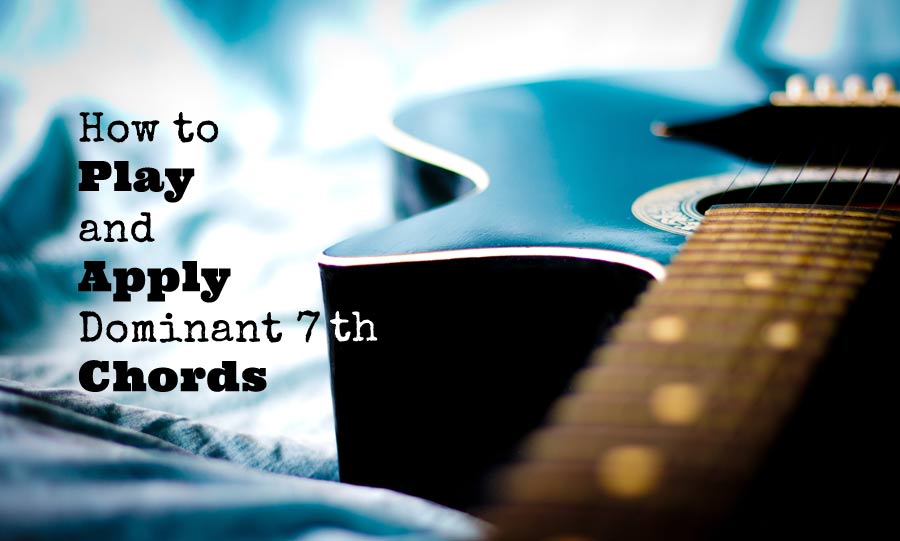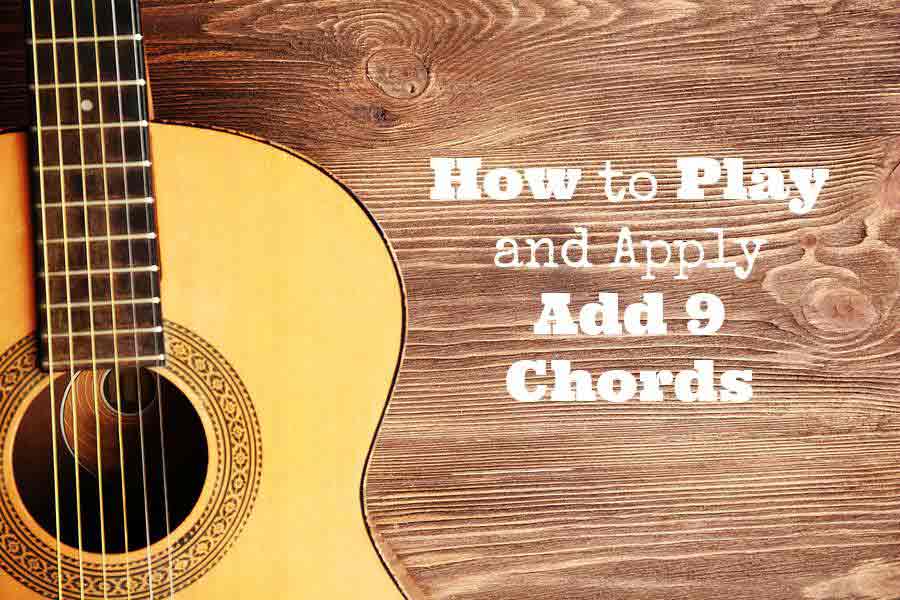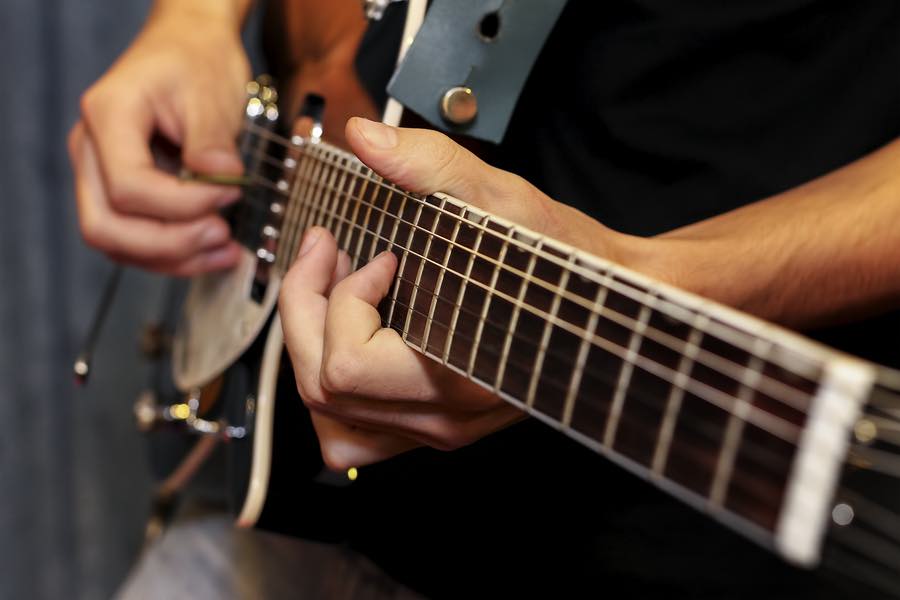
The dominant 7th chord is a chord that you will find in a lot of popular songs and many styles of music. In fact it’s the most essential chord type in blues music and one of the defining characteristics that defines the blues sound. But even if you’re not into blues, you want to make this chord part of your guitar vocabulary.
The dom7 chord comes in various shapes and sizes. We start with the “open” dom7 chords which are great for beginners and work our way up to more intermediate level dom7 chords: “The moveable chords”.
We’ll first take you through some basic dominant 7th music theory, we’ll show you the different types of dom7 chords and shapes, and then apply the chords to the song.
Let’s dive in!
Chord Analysis
The Dom7 chord is simply a major triad with a flatted seventh (b7).
The major triad consists of the root (1), the major third (3) and the perfect fifth (5).
So the Dom7 chord formula = 1 3 5 b7
Let’s take a Cdom7 (also called “C7”) chord as an example.
We look at the C major scale: C D E F G A B C and we take the root (1st), 3rd, 5th and b7th note of that scale and you get the notes: C-E-G-Bb. So a Cdom7 (C7) chord consists of the notes: C E G Bb


 Knowing how to build a scale is essential for understanding music theory, learning how the guitar works, to able to communicate with other musicians and to grow towards becoming an accomplished guitar player.
Knowing how to build a scale is essential for understanding music theory, learning how the guitar works, to able to communicate with other musicians and to grow towards becoming an accomplished guitar player.